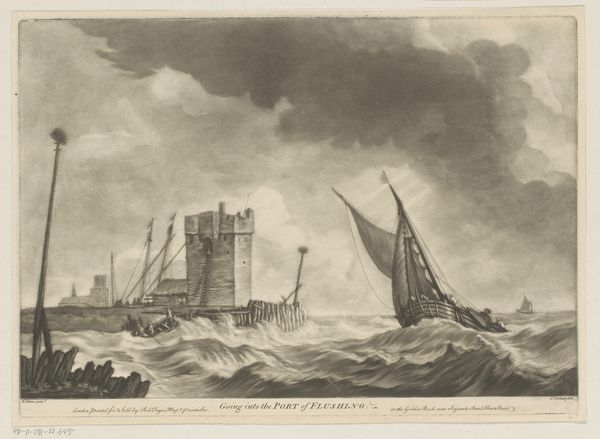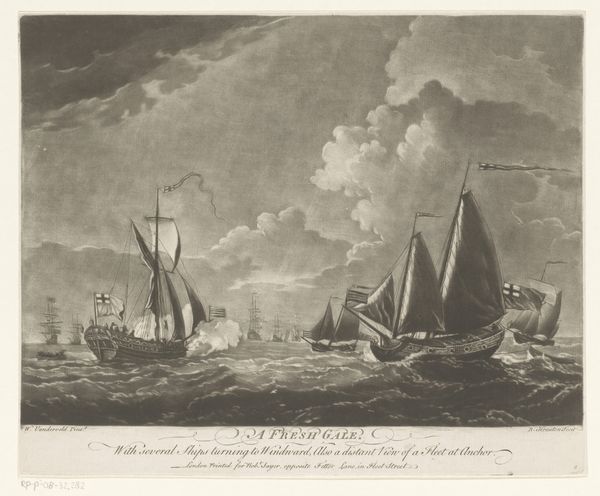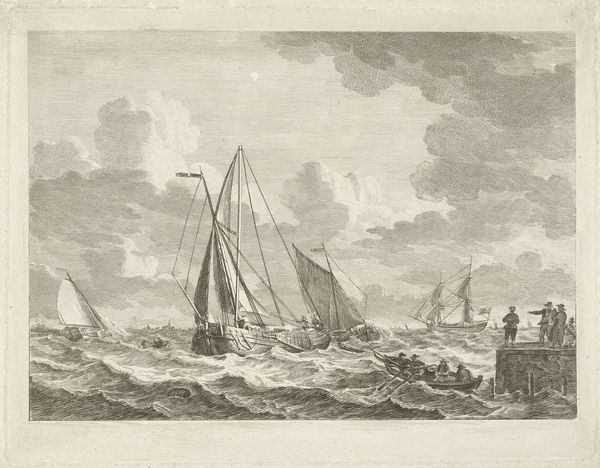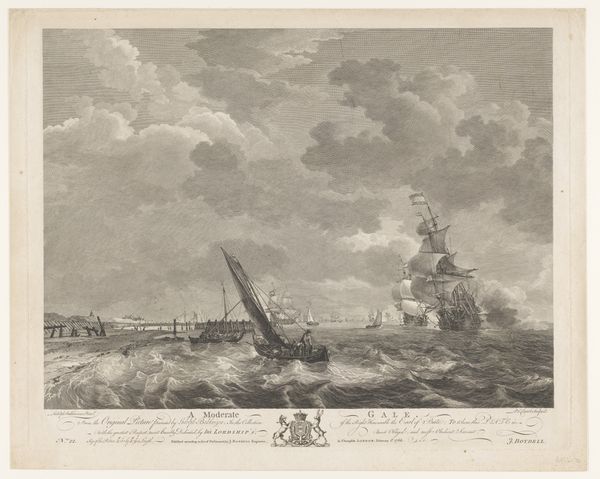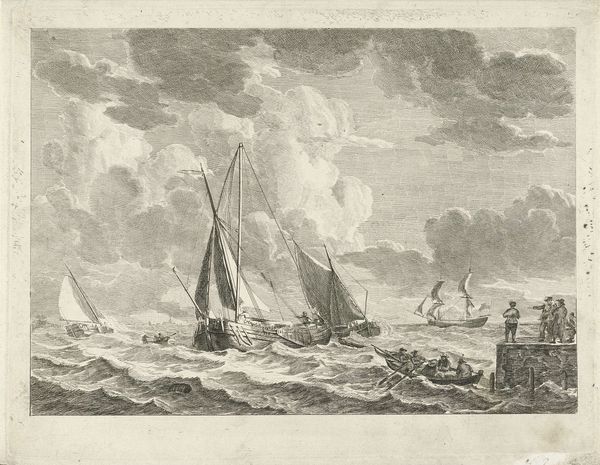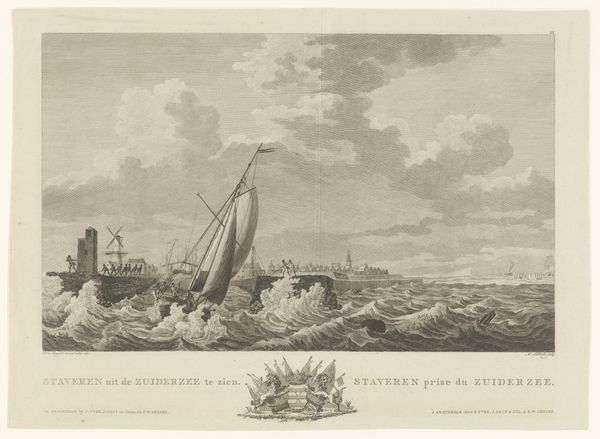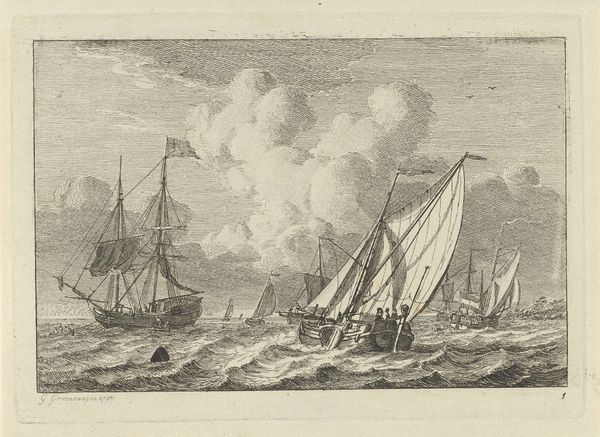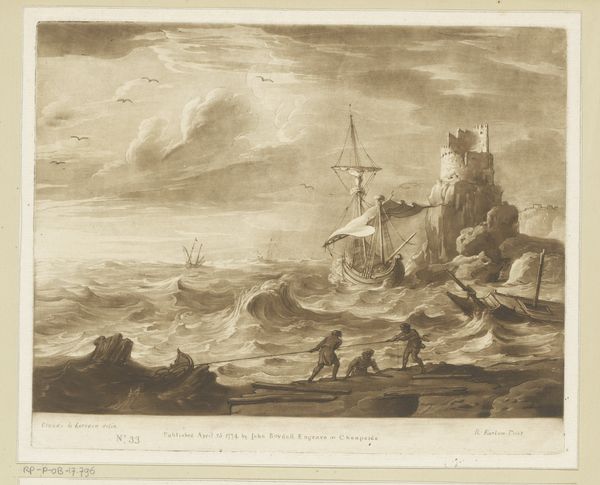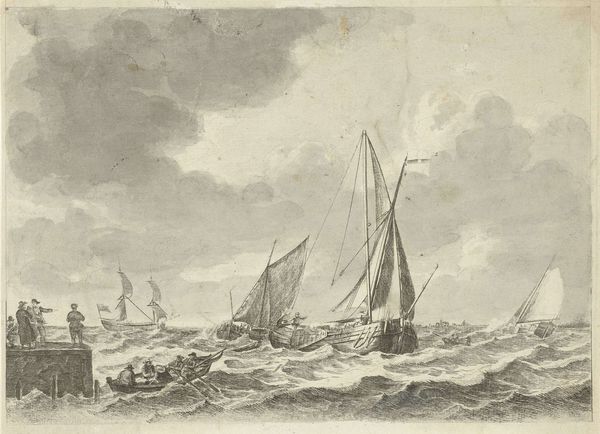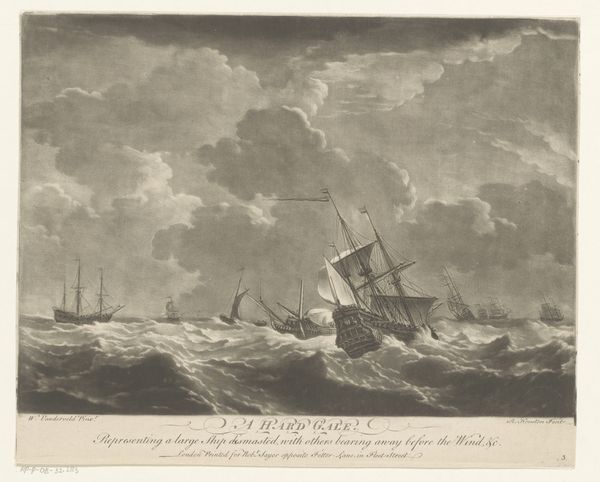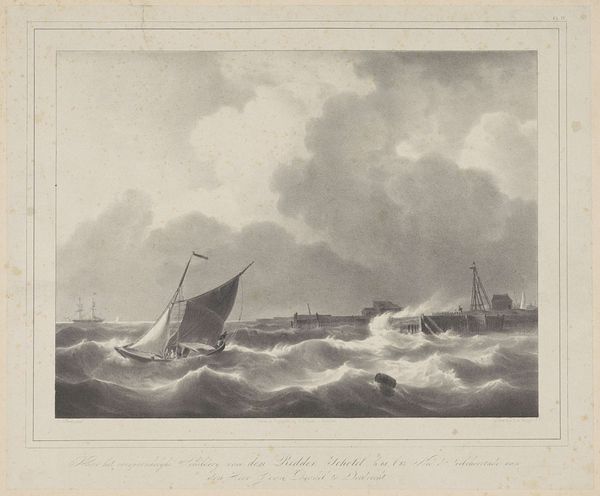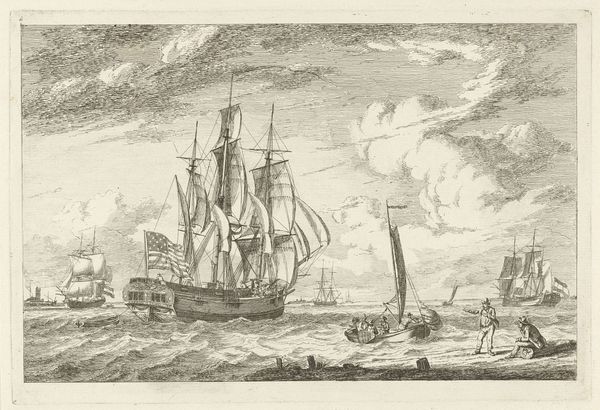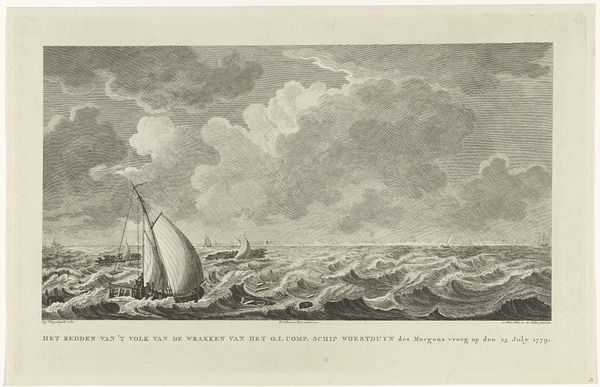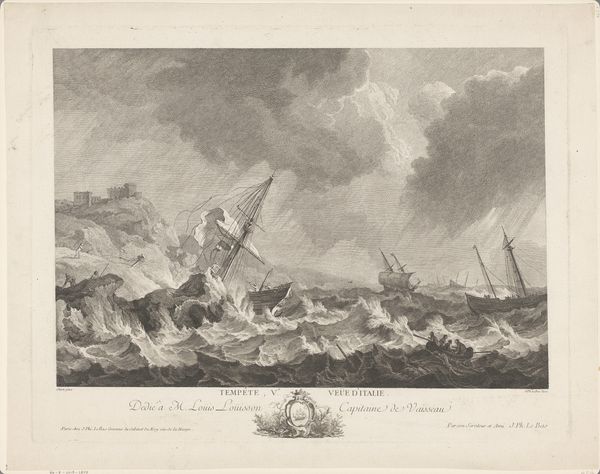
Dimensions: height 252 mm, width 354 mm
Copyright: Rijks Museum: Open Domain
This aquatint, ‘Zeilboten vertrekken uit de haven van Vlissingen’ - or, ‘Sailing out of the Port of Flushing’ - was made by Charles Corbutt, using a copper plate to produce the print. The aquatint process is itself tied to wider social issues of labor, politics, and consumption. To create the print, Corbutt would have etched the scene onto the plate, using acids to 'bite' into the metal. The shadows and depth are created through the application of resin or sugar lift, manipulated to control the tonal variations. Then the plate is inked and put through a printing press. A painstaking, repetitive process! Aquatints like this one made it possible to disseminate images widely – they could be produced in relatively large numbers and were thus more affordable than paintings. This speaks to a growing middle class with an appetite for visual culture. Next time you look at a print, consider the amount of labor involved, and how this affects the social context in which it was made and circulated. Recognizing the role of craft in fine art challenges traditional distinctions and offers a richer understanding of its meaning and significance.
Comments
No comments
Be the first to comment and join the conversation on the ultimate creative platform.
